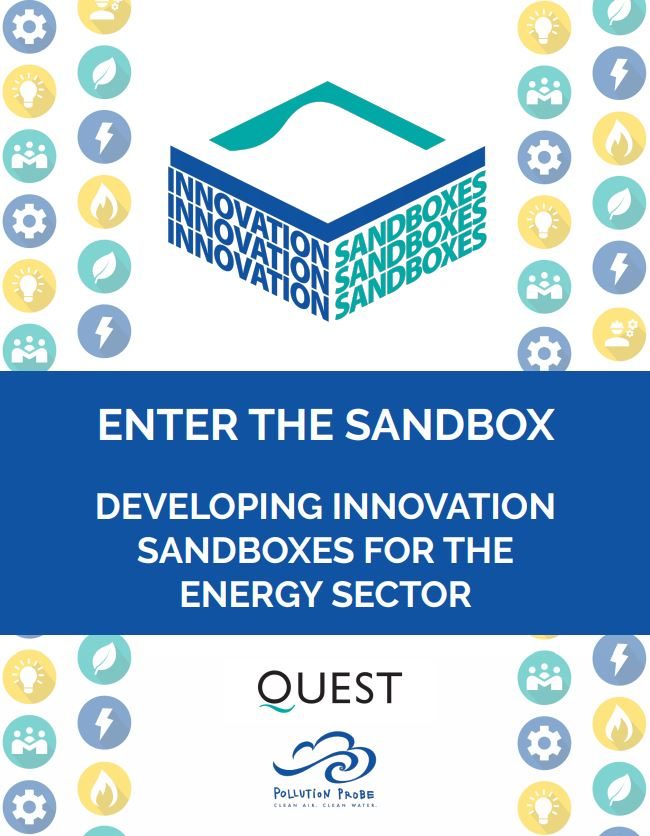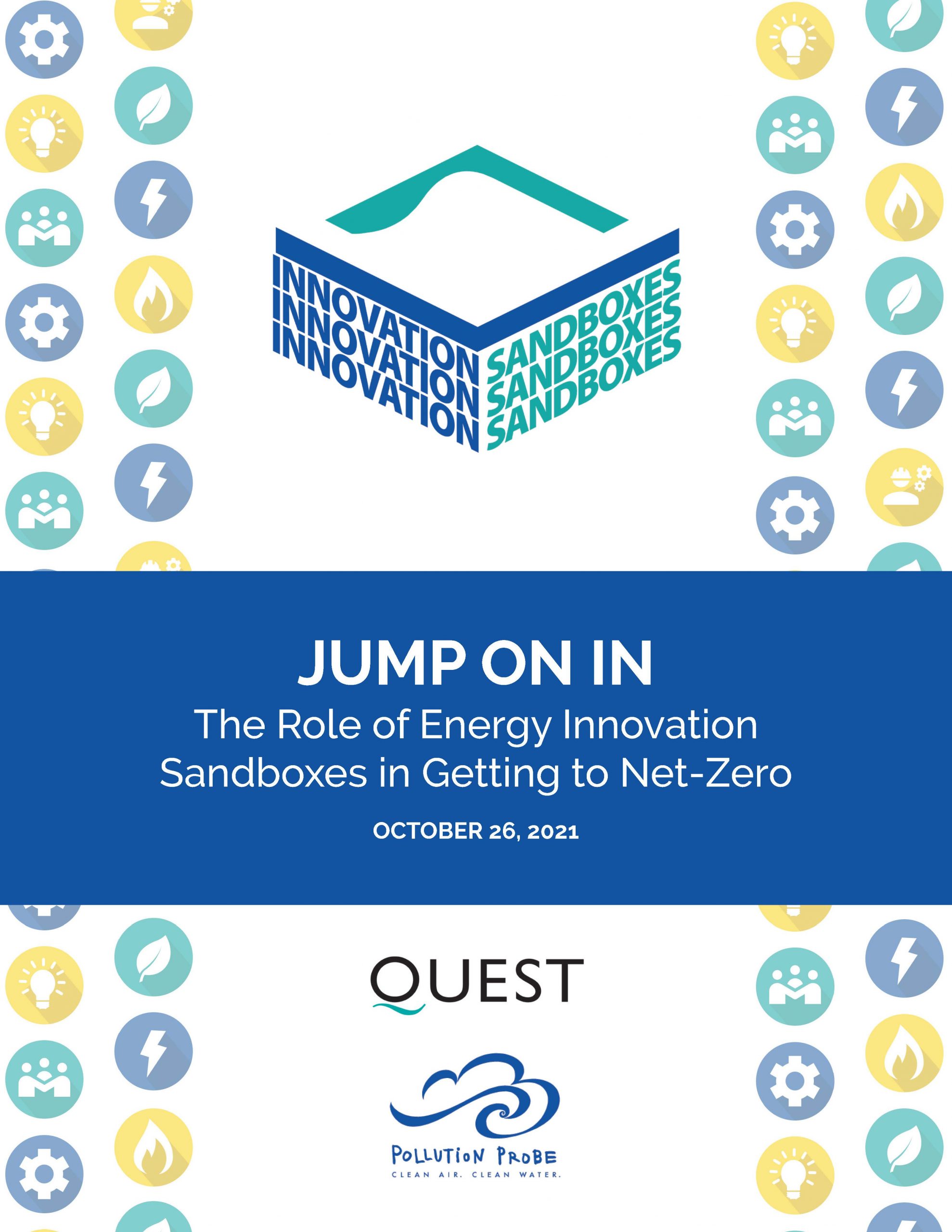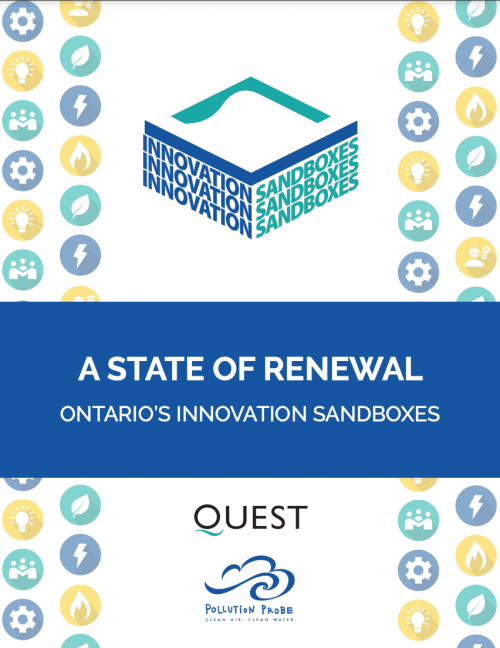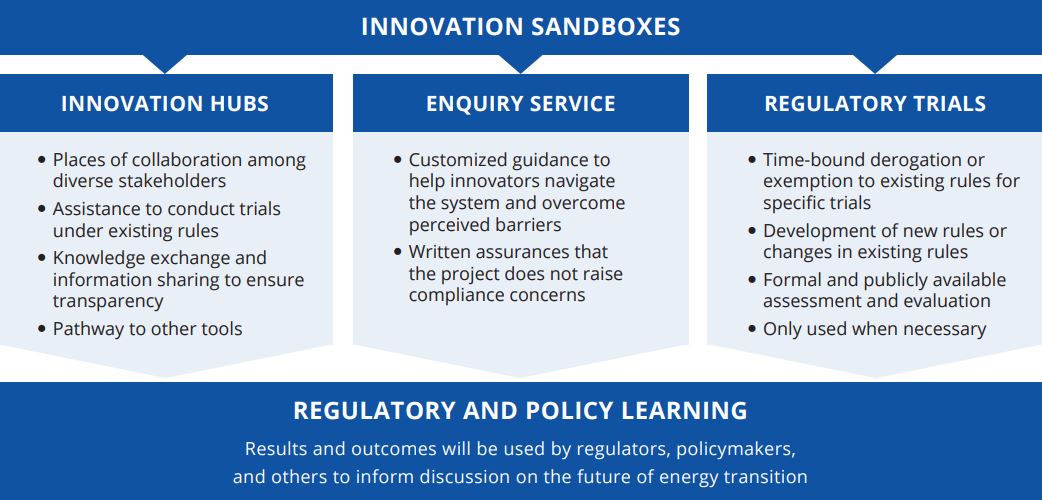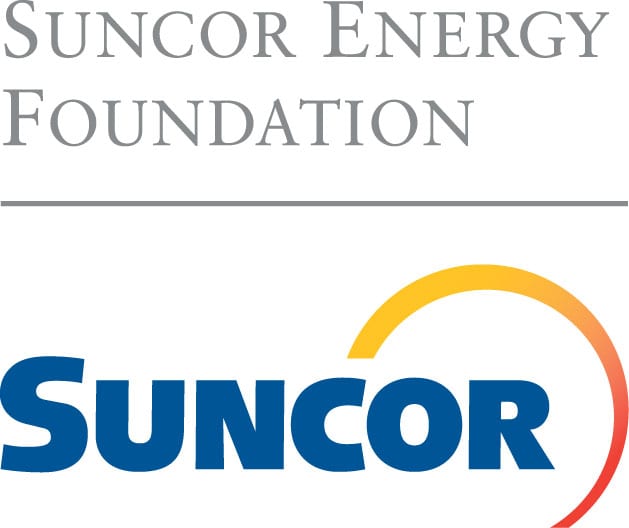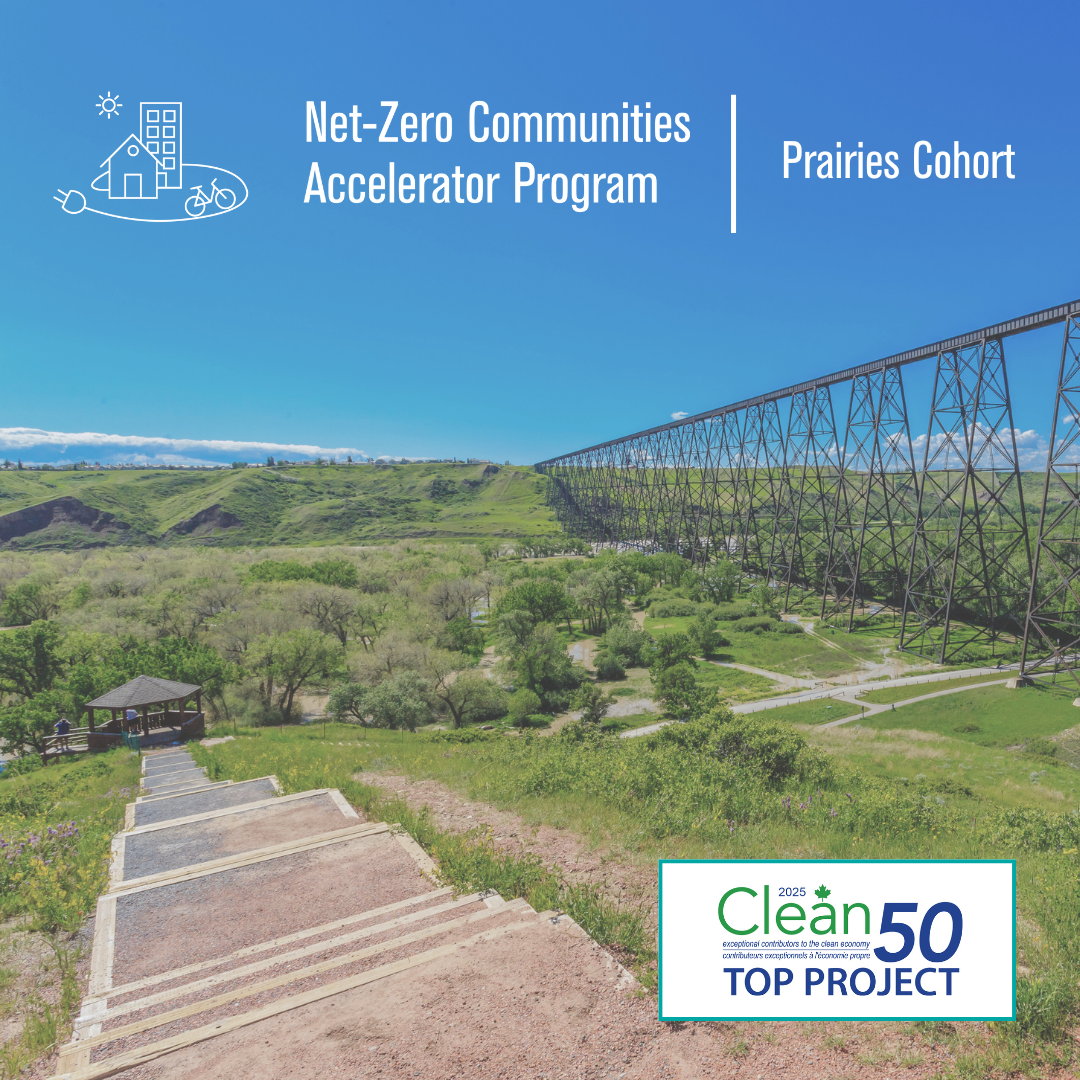
Innovation Sandboxes
ABOUT THE PROJECT
QUEST and Pollution Probe’s Innovation Sandboxes initiative is a four-year project to encourage and enable the innovation needed to meet our low-carbon targets through the use of Innovation Sandboxes in jurisdictions across Canada. We will do this by creating foundational policy frameworks and principles for Innovation Sandboxes that are tailored to participating Canadian provincial and territorial energy systems.
What Is An Innovation Sandbox?

An Innovation Sandbox is a policy tool that uses collaboration to create conditions for innovation to be integrated into the energy system, allowing for the examination of real (and often perceived) barriers as well as testing solutions in a real-world environment. Innovation Sandboxes use tools such as Enquiry Services*, Innovation Hubs*, and Regulatory Trials*, along with mechanisms that capture lessons learned, to inform the development of policies. Energy Innovation Sandboxes provide the opportunity to change how processes, procedures, policies, rules, or regulations are applied in a controlled manner, with the ultimate goal of creating durable and lasting systemic change to enable innovations that benefit the energy sector, consumers, and society.
5 Reasons Why Innovation Sandboxes Are Needed In Canada
#1 - Accelerating Deployment of Low-Carbon Innovation to Meet Canada’s Net-Zero Target
- Support the deployment and scale-up of proven low-carbon technologies
- Remove non-technological barriers to innovation and create long-term conditions that enable scale up of innovation.
Innovation Sandboxes can solve both of these problems by providing a broader lens through which to consider innovation and innovation policy in the energy sector, and by rebalancing focus from funding technology to innovation deployment.
#2 - Support Safe Testing of Products & Services in a Real-World Environment
Due to their heavy focus on technological demonstration projects, current energy innovation programs lack a space to experiment with non-technological innovations such as business models, consumers’ behaviours, governance and operational processes, and collaboration practices.
We heard about the need for innovation to move beyond conventional demonstration and to allow for safe trailing and testing within a real-world environment. Innovation Sandboxes provide this safe space. Examples of the types of innovations that could be tested in this way include: trialing new business, operational, governance, or consumer models, and testing new rate structures and practices.
Innovation Sandboxes that use real-world trials have the potential to introduce new opportunities that complement demonstration projects. This has been done by considering how the innovation integrates into the energy system (current standards, policies regulations, and business models) and interacts with other players (consumers, investment partners, and others).
#3 - Modernizing the Regulatory System
- Addressing regulatory no man’s land: these include regulations that did not catch up with emerging technologies or solutions, create uncertainty for innovators working with new technologies, as well as:
- Regulatory lag: regulations that have been in place for so long that they are no longer stringent enough compared with recent technology performance
- Lack of regulatory alignment creating a “patchwork of markets”: a streamlining and harmonization of provincial and territorial regulations with federal regulations
- Delivering enquiry services to make the regulatory system more accessible and easy to navigate: the energy system can be challenging to navigate. It takes significant resources to understand the system as well as to influence it.
- Engaging new stakeholders, and in a different way: Non-traditional energy players do not speak the regulator’s language and feel overwhelmed by the regulatory “machine.” Innovation Sandboxes allow for the regulator to rethink the way they engage non-traditional stakeholders and to be innovative to make the system accessible to each actor.
#4 - Collaborating Across the Energy Sector and Capturing Lessons Learned to Inform Policy and Regulatory Change
Except in rare instances, most energy innovation policies and programs lack sound, comprehensive and well-thought-out collaborative and knowledge-sharing mechanisms. Typically, the results of a project centre on technical learning and advancements and are only shared through industry conferences and publications, leaving innovators and their innovations isolated from the economic, policy, and social dimensions of the system.
In addition, current energy innovation programs have limited to no mechanisms to capture findings and knowledge from projects and programs to inform policy and regulatory changes, yet this is essential to remove structural barriers to innovation and facilitate their scale-up.
Innovation Sandboxes can offer collaboration and knowledge sharing mechanisms through Innovation Hubs and put in place mechanisms to ensure lessons learned are documented and used to inform future energy policy and regulatory discussions.
#5 - A Flexible Tool That can be Adapted to each Jurisdictional Context
To be successful, Innovation Sandboxes need to be well-designed and there is no “one” type as they need to be tailored to the local context and specific needs of the jurisdiction in which they are developed. There are multiple ways to run an Innovation Sandbox. Innovation Sandboxes are diverse in who is creating and implementing them. They can be developed by governments and regulators — in some cases both — to pursue specific policy outcomes.
Innovation Sandboxes are also diverse in the energy sources they consider: while the focus has tended to be on the electricity system, some include, or will be expanded to, natural gas. A few have also included transportation and electrical vehicles. Finally, Innovation Sandboxes are diverse in the policy tools that are associated with them, such as funding, data sharing, and academic research.
This is why the design phase is crucial. Developing effective energy Innovation Sandboxes in Canada means ensuring they reflect each jurisdiction’s context and needs and are designed by incorporating feedback from diverse stakeholders representing the entire energy system, from energy users to new entrants, to utilities; from the regulators to the government. Therefore, developing effective Innovation Sandboxes requires the use of innovative and inclusive engagement processes.
Project Goals
SUPPORT
Support net zero-targets through the deployment of readily available low-carbon technologies and testing new business models and regulatory frameworks
GUIDE
Work with up to three Canadian jurisdictions to create tailored frameworks to introduce energy Innovation Sandboxes
RESEARCH
Investigate and share knowledge and best practices on Innovation Sandboxes in Canada and internationally
CONNECT
Increase collaboration and dialogue amongst regulators, policy makers, government, consumers, civil society, academia, and innovators
Next Steps
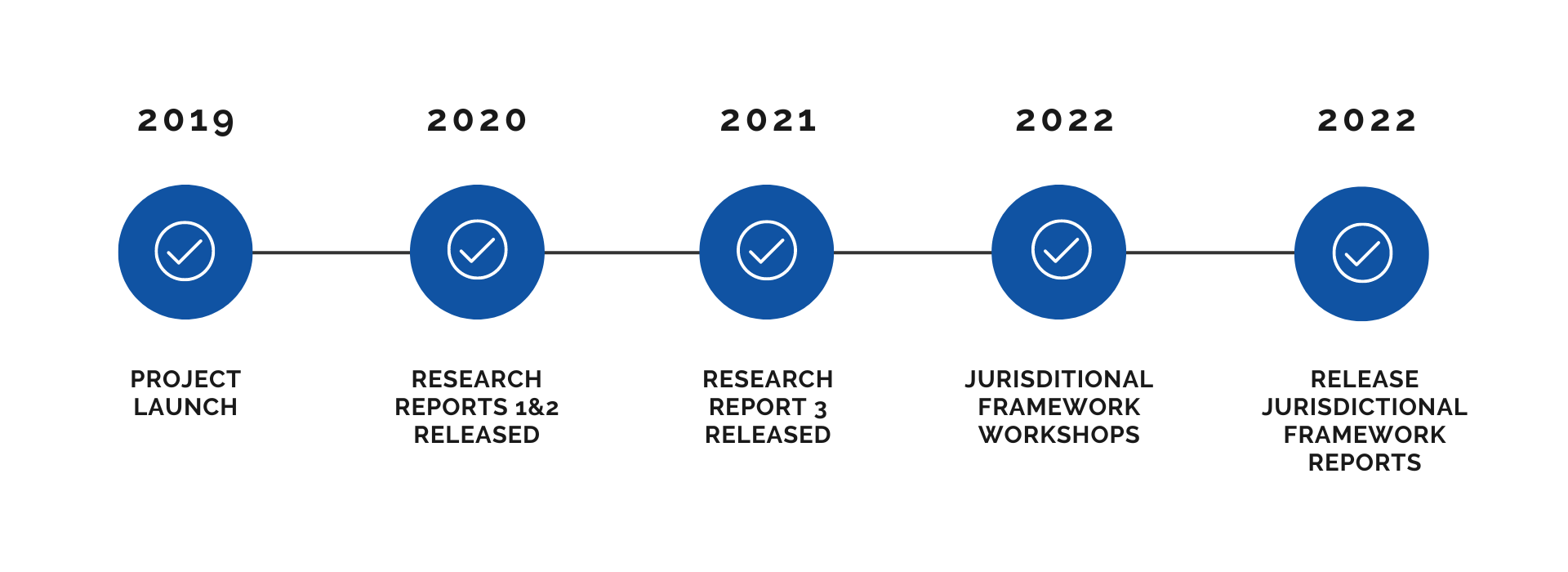
Research
QUEST Canada and Pollution Probe have completed all three reports as part of this project. The first report, Enter the Sandbox: Developing Innovation Sandboxes for the Energy Sector, is the first international research comparing Innovation Sandboxes implemented or being developed by nine jurisdictions worldwide. It presents the concept of sandboxes and how they have been designed.
The second report, Getting to Deployment: Bridging the Gaps in Energy Innovation in Canada, reviews current innovation policies and programs in Canada’s energy sector and examines the potential role Innovation Sandboxes can play to overcome non-technological barriers and scale up low-carbon innovation in Canada’s energy sector.
The third and final report, Jump On In: The Role of Energy Innovation Sandboxes in Getting to Net-Zero, is a continuation of the project research and has a focus on Canada. It builds on previous report findings as well as a series of national and international workshops hosted by QUEST and Pollution Probe.
National and Jurisdictional Workshops
QUEST Canada and Pollution Probe worked collaboratively with provincial, territorial, and federal policy makers, regulators, utilities and other key energy stakeholders to conduct workshops on developing tailored frameworks for Innovation Sandboxes to encourage the conditions for innovation that can meet public policies. This was completed in three phases, which have been detailed below:
- Phase 1: National Engagement | April 2021. This first national workshop collected feedback and input in order to capture a diversity of perspectives on the barriers to innovation.
- Phase 2: Jurisdictional Engagement | Spring – Fall 2021. QUEST Canada and Pollution Probe engaged with diverse stakeholders to recruit and work with several provinces and territories interested in implementing tailored Innovation Sandboxes.
- Phase 3: Jurisdictional Workshops | Winter-Spring 2022. QUEST Canada and Pollution Probe held a series of workshops with participating provinces and territories to develop Innovation Sandboxes frameworks tailored to their particular requirements and circumstances.
Innovation Sandbox Jurisdictional Frameworks
QUEST Canada and Pollution Probe share learnings and recommendations from the hosted workshops and research conducted based on jurisdictional realities for the role of Innovation Sandboxes in Canada’s net-zero future. These frameworks can then be used by others to inform policy and regulatory reform or to create more effective policies, regulations, and programs to accelerate the transition to a low-emissions future.
- Jurisdiction 1 – Ontario
- Jurisdiction 2 – Nova Scotia
- Jurisdiction 3 – New Brunswick
GET INVOLVED
On this project, we were pleased to work with a diversity of organizations, including:
Federal energy regulators
Provincial & territorial energy regulators
Provincial & territorial policy makers
Indigenous communities and local governments
Financiers/investors
Energy Utilities (electric, gas, nuclear)
Energy consumers representative
Technology and services providers
Consumers advocates
Industry associations
Academia
RESOURCES
The Reports
July 2020
The report, Enter the Sandbox: Developing Innovations Sandboxes for the Energy Sector, identifies best practices and lessons learned to design and develop Innovation Sandboxes in Canada by looking at sandboxes implemented or being developed, in ten jurisdictions worldwide.
November 2020
This report, Getting to deployment: Bridging the Gaps in Energy Innovation in Canada, reviews current innovation policy in Canada’s energy systems and identifies Innovation Sandboxes as a key policy tool to address non-technological barriers innovators face, and accelerate the deployment of innovation in Canada’s energy sector.
OCTOBER 2021
This report, Jump On In: The Role of Energy Innovation Sandboxes in Getting to Net-Zero, is a continuation of the project research and has a focus on Canada. It builds on previous report findings as well as a series of national and international workshops hosted by QUEST and Pollution Probe.
Jurisdictional Reports
Read the tailored Innovation Sandbox framework reports we created with jurisdictions across Canada.
FAQ
When were Innovation Sandboxes developed
Innovation Sandboxes are a relatively new policy tool globally, but they are becoming more widely recognized as a useful tool for encouraging the deployment of innovation in various sectors, including in the energy sector (see report 1). Canada is no exception. Federal, provincial, territorial, and municipal governments are increasingly interested in the development of Innovation Sandboxes, and some jurisdictions have already established Innovation Sandboxes in different sectors. For example, the federal government has identified Innovation Sandboxes and Regulatory Trials as part of its initiative to broadly promote emerging technologies and to modernize regulatory frameworks in a number of sectors (see report 2).
While elements of sandbox-like tools can be seen in Canadian energy innovation programs, Ontario is the home of the only energy Innovation Sandbox in Canada. The Ontario Energy Board (OEB) — the energy regulator in Ontario — introduced an Innovation Sandbox in 2019 following feedback from the sector concerning regulatory barriers, and the desire to act quickly to encourage innovation.
What is an Enquiry Service?
A tool of Innovation Sandboxes that provides customized guidance to help innovators navigate
the system and overcome perceived barriers. As one example, innovators may have informal
discussions with the Innovation Sandbox administrator and have ideas assessed.
What is an Innovation Hub?
A tool of Innovation Sandboxes that employs collaborative tools or platforms that enable knowledge exchange and sharing of lessons learned between innovators, and general information about regulatory systems for conducting trials.
What is a Regulatory Trial?
A tool of Innovation Sandboxes that offers time-bound derogation or exemption to existing rules for specific trials (in some literature referred to as Regulatory Sandboxes).
How can I become a project partner?
If you would like to support this project as a funder please contact Director, Projects and Research, Laura Gareau.
Are there Innovation Sandboxes in Canada?
Canada is no stranger to Innovation Sandboxes; in fact, several are already being used at the federal, provincial, and local government levels, in various sectors, such as in securities, agrifood, and transportation.
In the energy sector, the Ontario Energy Board (OEB) implemented the first Sandbox in Canada, which has shown that they can provide benefits and has highlighted areas for improvement. And while not true Innovation Sandboxes, some recent Canadian energy innovation programs have introduced sandbox-like tools in their design to address non-technological barriers and the deployment of new practices and business models.
PROJECT PARTNERS & SUPPORTERS
Partners
Pollution Probe is a national, not-for-profit, charitable organization which is improving the health and well-being of Canadians by advancing policy that achieves positive, tangible environmental change. It is a leader in building successful partnerships with industry and government to develop practical solutions for shared environmental challenges.
Funders
This project is made possible by support from the Suncor Energy Foundation (SEF) .
The Suncor Energy Foundation (SEF) is a private, non-profit, charitable foundation established by Suncor in 1998 to receive Suncor’s contributions and support registered Canadian charitable organizations. The Foundation complements other forms of community investments by Suncor, such as product or in-kind contributions, sponsorships, employee giving and volunteer efforts.
Other Resources
QUEST Canada develops and implements projects with the aim to nurture strategic partnerships, facilitate connections, empower community champions, and influence decisions makers, supporting communities across Canada on their pathway to net-zero. Find out more about our projects:
Pan-Atlantic NCA
QUEST Canada’s Net-Zero Communities Accelerator (NCA) Program has been recognized with a prestigious 2025 Clean50 Top Project Award. The annual awards recognize initiatives based on their innovation, their ability to inform, and to inspire Canadians.
QUEST Canada’s Pan-Atlantic NCA Program enables Atlantic Canada communities to reach net zero by equipping them with the tools and knowledge to develop and implement community energy and emissions plans and understand the net economic benefits they can provide.
Energy Transition Policy Program
The objective of QUEST Canada’s Energy Transition Policy Program is to engage in a collaborative discussion with energy decision-makers to align climate and energy transition planning and policies that will facilitate sustainable community energy systems in support of a net-zero carbon (carbon neutral) economy by 2050.
NCA: Prairies Cohort
The NCA Program’s inaugural cohort, the Prairies Cohort, is currently comprised of fifteen participating communities from Alberta, Manitoba, and Saskatchewan.



